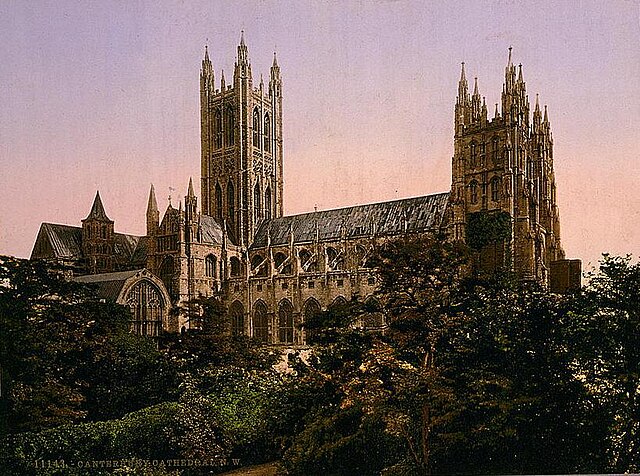"The Miller's Tale" is the second of Geoffrey Chaucer's Canterbury Tales (1380s–1390s), told by the drunken miller Robin to "quite" "The Knight's Tale".
The Miller's Prologue is the first "quite" that occurs in the tales.
Door with Cat Hole (carved oak, Late Medieval period, 1450–1500, France, Walters Art Museum) This door, carved with a linen-fold decoration, was probably a back or interior door of a middle-class home. It is remarkable for its cat hole. Few doors with cat holes have survived from this early period, but the 14th-century English writer Geoffrey Chaucer described one in the "Miller's Tale" from his Canterbury Tales. In the narrative, a servant whose knocks go unanswered, uses the hole to peek in: "An hole he foond, ful lowe upon a bord/ Ther as the cat was wont in for to crepe,/ And at the hole he looked in ful depe,/ And at the last he hadde of hym a sighte."
The Canterbury Tales is a collection of twenty-four stories that runs to over 17,000 lines written in Middle English by Geoffrey Chaucer between 1387 and 1400. It is widely regarded as Chaucer's magnum opus. The tales are presented as part of a story-telling contest by a group of pilgrims as they travel together from London to Canterbury to visit the shrine of Saint Thomas Becket at Canterbury Cathedral. The prize for this contest is a free meal at the Tabard Inn at Southwark on their return.
A Tale from the Decameron by John William Waterhouse
Canterbury Cathedral from the north west c. 1890–1900 (retouched from a black & white photograph)
Title page of Geoffrey Chaucer's Canterbury Tales in the hand of "Scribe B", identified as Adam Pinkhurst, c. 1400.
The Peasants' Revolt of 1381 is mentioned in the Tales.





